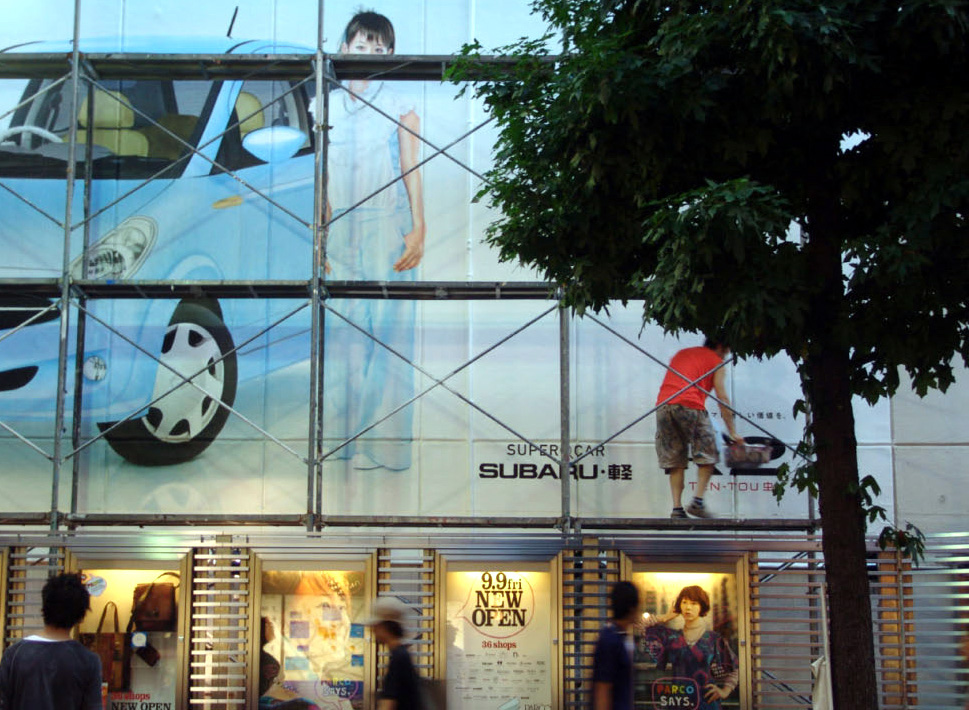The walls around Parco Shibuya are updated every two weeks or so with a newly painted mural. You often see the mural crew working late on a friday night, presumably on a deadline to get the material up in time for the saturday shoppers. The last part of the painting process is the detail in the faces – so in adverts containing lots of people you become witness to ghostly versions of what appears in print. The images are quite compelling. Tokyo is full of big screen outdoor displays, garish neon and bright lights which makes hiring mural painters all the more peculiar. What additional value does commissioning advertising in this way bring? There are undoubtedly cheaper and more efficient alternatives in this area of prime real estate and premium advertising space.
My guess that part of the equation of choosing mural painters over JumboTrons is that the audience – in this case the passing shoppers of Shibuya will be at least somewhat interested by the process. Seeing a mural unfold over a period of time like a work of art taking shape, and seeing the end result – close replicas of the print advertising and appreciating the effort that went into the process.
In a world where things seem to be forever becoming faster, smaller, cheaper, and mass produced one thing we can (mostly) all appreciate is the perceived time and effort it takes to do something. Skill is another factor, but it is more subjective. Effort is admittedly a little fuzzy. But time is absolute.
Have you ever received an E-Card? What was the value of that card to you? Now compare it to the value of a digital photo or a hand-written postcard. Receiving an e-card, digital photo or physical postcard you may or may not like the design but can appreciated the time, effort, and sometimes skill that goes into the process of sending it to you. In the case of an E-Card the value is mostly close to zero because that card is available for just about anyone to send.
In the distant future it may be possible to measure the level of sensory engagement that is involved in creating and consuming content and media*. I know you liked that birthday card because it told me how much time you spent handling it, gazing at it and displaying it in your home. Part of the reason you like it so much is that you know I put so much effort into obtaining its composite parts, how long ago I first thought of the idea – ‘six months!’, and the number of design iterations it went through before it reached you. You know because it told you so. Or at least it told you about the aspects that I let it tell you.
Of course the way this plays out is that we create agents to simulate the level of sensory engagement on our behalf – to make it appear that we appreciated your gift to me, to make it appear that I spent sleepless months working on my gift to you. Whole side-industries beavering away to create the perception of underlying value. Which sounds like extrapolations of what happens already.
